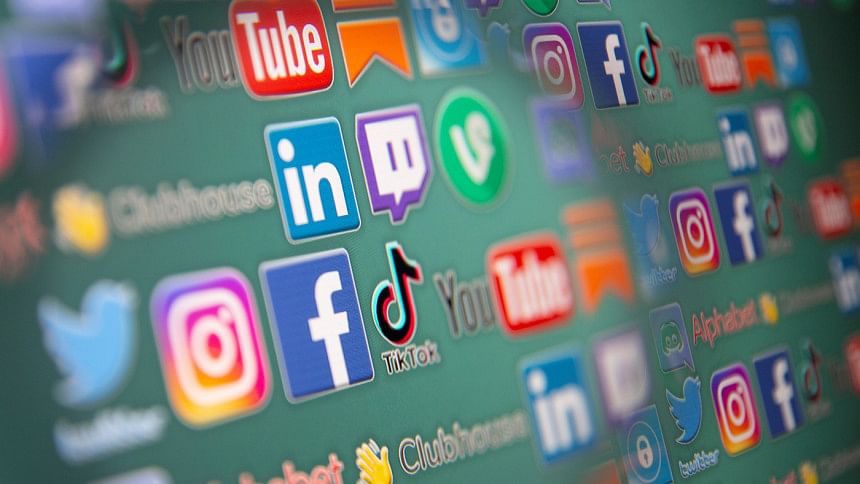What does science tell about social media addiction?

Our society is entrapped in an infinite maze of unavoidable notifications and unproductive videos from social media. Everyone talks of crossing this maze of addiction with numerous conjectural techniques. However, understanding the science behind social media obsession can help people know the logic behind their addictive practices and help them overcome such issues.
In this era of momentous modernisation, people are getting more and more addicted to social media, and most are unaware of their own dependency. Social media gives people an instant dopamine rush and makes them feel ecstatic. Dopamine is a neurotransmitter released when we feel an unprecedented rush of motivation or when we are in complete expectation of a reward. In simpler words, it is a chemical generated in our body that makes us feel ecstatic. To gain the same rush or pleasure that we felt in the initial stages of using social media, we must spend more hours each passing day, as our body gets resistant to artificial dopamine rushes quickly.
The body has a natural baseline for dopamine, and whenever people want to feel a peak of dopamine rush, in other words, "artificial happiness," they have to cross the baseline. At one point, the body's baseline dopamine is artificially raised because of constant consumption of social media. Soon, the body becomes increasingly unresponsive to the naturally produced dopamine, which is way lower than the artificial one.
As time passes, it craves an artificial rush, and the individual spends more time on social media, leading to a further rise in the baseline and a further craving for social media to cross the baseline. So, from 10 minutes to 40 minutes to one hour, the consumption continues. This is known as the "Hedonic Treadmill Theory." This theory explains that everything that is addictive in life must be consumed in larger amounts over time to receive the same stimulation as its initial stages, because the human body easily becomes resistant to smaller doses of the same thing. Therefore, it leads to addiction. According to Forbes magazine, an average teenager spends 5.8 hours daily on social media, and this rate is increasing alarmingly.
Meanwhile, the euphoric sensation of pleasure and the undesirable feeling of pain are both controlled in the same sector of the human brain. Our body has a balancing system, scientifically called "homeostasis." This modulates both emotions simultaneously, akin to a seesaw. Instead of children, the seesaw is occupied by pleasure on one side and pain on the other. When pleasure goes up, pain consequently goes down, and vice versa. Our body never wants an imbalance to occur. The body searches for ways to bring the seesaw to a base level. This is called the "Seesaw Theory."
When spending excessive time on social media, the metrics of pleasure go up. Nowadays, people mostly watch Reels and TikTok, where the videos end very quickly. As soon as the video finishes, our brain feels a sense of "completion." Usually, whenever our body completes any action, it releases dopamine, which makes us feel "rewarded." We chase this feeling of reward repeatedly, as we know that we can get it quickly through short videos on social media. This makes social media a uniquely attractive source of happiness and reward.
This sense of pleasure continues to rise if we continue with the consumption: the pleasure side of the seesaw goes up. Now there is more pleasure than pain. This keeps on rising, as long as we stay on social media. However, as soon as we leave our mobile screens, the body regains its control on the seesaw. Now, there is no more external force, such as social media, misleading our brains. The body immediately senses the disproportionate distribution of the two feelings. It tips the seesaw towards the side of pain with equal force and intensity. Soon, we feel huge pain and search for ways to regain "pleasure." Therefore, we resort to watching social media again, and soon it leads to addiction.
However, there are ways to get rid of this addiction. Involving yourself in physical activities, like sports or exercise, increases dopamine naturally, leading to less usage of social media. Societal engagement also helps, as conversing about yourself with others and receiving their validation makes people feel rewarded and enhances internal peace. Thirdly, practise panoramic vision for 17 minutes each day. Focus on your breathing process and the surrounding environment in nature. This helps maintain mental agility and regain control over your own choices.
Contributing to society and helping others also make us feel happier and rewarded, while self-control is imperative. The first two weeks of leaving social media will make us feel dopamine deficient, but in the third week, our brain reinforces control over our pleasure-pain system naturally, making us feel better. Besides, we can practise NSDR (non-sleep deep rest): this increases baseline dopamine by up to 65 percent in a natural and beneficial way. Meanwhile, spending some time under morning sunlight increases cortisol, a chemical that gives us energy and enforces dopamine throughout our body, making us feel elated. Finally, learning new skills, such as coding or a new language or musical instrument, makes us feel rewarded every day.
Nayera Abdullah is a student at Scholastica. Email: [email protected]
Views expressed in this article are the author's own.
Follow The Daily Star Opinion on Facebook for the latest opinions, commentaries and analyses by experts and professionals. To contribute your article or letter to The Daily Star Opinion, see our guidelines for submission.

 For all latest news, follow The Daily Star's Google News channel.
For all latest news, follow The Daily Star's Google News channel. 








Comments